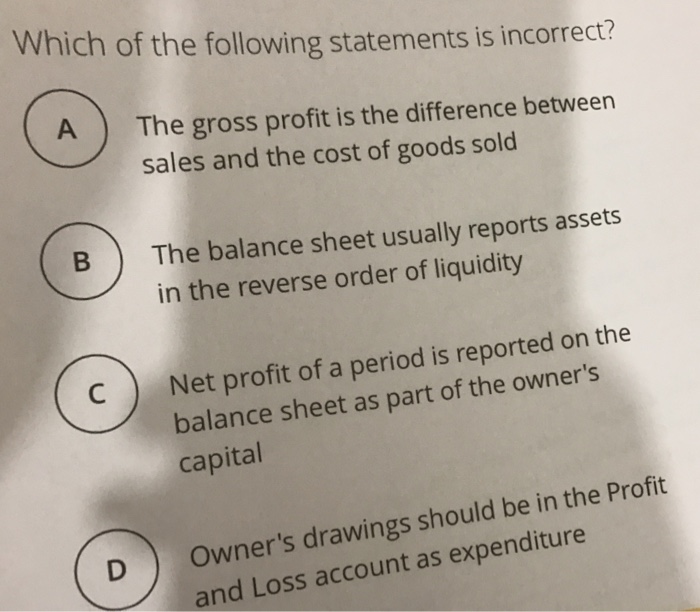Question
Question: Case 16 The Maria and Sancho Ruiz Case A COMPREHENSIVE FINANCIAL PLANNING CASE Maria Ruiz recently turned age fifty. She heard about your firm
Question:
Case 16
The Maria and Sancho Ruiz Case
A COMPREHENSIVE FINANCIAL PLANNING CASE
Maria Ruiz recently turned age fifty. She heard about your firm from a neighbor who recommended your services as a comprehensive financial planner. The neighbor, who you helped with retirement and education funding questions, was particularly pleased with the manner in which you incorporated cognitive, emotional, behavioral, relational, and economic concepts into your recommendations. She told Maria that you are excellent at getting to the root of the quantitative aspects of financial details as well as delving into each client's emotional relationship with money and financial issues.
Based on this recommendation, Maria called your office for an appointment. Your receptionist indicated that you would be delighted to meet with her if both she and her husband (Sancho) would come in for a meeting. This caught Maria off guard because she was not sure if she could convince her husband to come to the meeting. However, you heard back from Maria a few weeks later. She had persuaded her husband to meet with you.
Prior to the meeting, you sent Maria and Sancho a data gathering form and asked them to bring important financial documentation to the first meeting. You met for the first time in your conference room. You and your paraplanner (Emily) were able to determine the following from these data and the meeting:
?Maria has a relatively low level of risk tolerance.
?Sancho is a real risk taker.
?Their shared primary goal is to retire when Maria turns age sixty-five, assuming the following:
?Maria and Sancho need to earn the equivalent of $495,000 before taxes per year?today's dollars?at that time.
?Maria and Sancho anticipate living until Sancho is ninety-five years of age.
?Maria and Sancho except inflation to average 3.0 percent annually into the future, which is also the anticipated growth rate of savings and salaries.
?Maria and Sancho have simple wills leaving assets to the surviving spouse. Neither Maria nor Sancho have any other estate planning documents or trusts in place.
Additionally, Maria has several questions she would like answered:
?First, is she adequately protected in case Sancho were to pass away?
?This is a concern for Maria because she has split her time between being a stay-at-home mom and working in the family's rental real estate business and in Sancho's consulting firm for most of her adult life.28
?Second, she would like for you to investigate the family's financial situation because she cannot figure out why she and Sancho have been having a challenging time balancing their budget month-to-month.
?Maria thinks that she and Sancho make a reasonably good income, but she is not able to see where all the money is going, particularly the family's investment earnings.
?Third, she is interested in other advice and counsel that can be used to benefit her and the family's financial situation.
Information about Sancho
During the meeting, you learned a few things about Sancho. He is a very busy person. He currently works for a high-tech firm. He is the senior vice president of cyber security. As a senior executive with the firm, his position is very secure. In addition, Sancho runs a business consulting firm. His firm provides executive leadership consulting to Fortune 500 company clients. Sancho's consulting firm has been very successful?even though it is run primarily as a small business. You did learn that Sancho runs the consulting practice as an LLC, but he has no full-time employees, although he does pay Maria a nominal wage so that she can fund her individual retirement account (IRA) and maintain a wage base for Social Security purposes.29
An interesting element of Sancho's business is that he needs to travel quite a bit. This is the reason he has established offices in Las Vegas, Nevada and St. Petersburg, Florida. He leases a car in each location so that one is available when he uses the office. Sancho chose these locations for two reasons:
?The first is that he and Maria already own a personal condominium in each city. Being familiar with each location made the decision easier.
?Second, Sancho thought having a base of operations on the east and west coasts would be an innovative idea in terms of client contact and entertaining.
Maria also liked the idea of establishing offices in each location because her family lives in Tampa and vacations in Las Vegas frequently.
Given the dynamic real estate markets in Las Vega and St. Petersburg, and economic signs of price appreciation, Sancho and Maria purchased condominiums as rental investments in each city.30 Maria was involved in the purchase decisions but did not choose the initial (or current) tenants. Once the properties were rented, Sancho and Maria created an LLC to hold the condominiums. Sancho and Maria are each 50 percent managers. In order to avoid passive activity rules associated with owning rental real estate, Maria took the role of property manager. She devotes between fifteen and twenty hours per week working in the business managing the day-to-day real estate operations. Maria is responsible for screening potential new tenants,31 scheduling repairs, paying expenses and homeowner's association bills, and ensuring that rent is collected on a timely basis. Given that Sancho frequently travels to Las Vegas and St. Petersburg, he has also asserted that he allocates approximately 500 hours per year to the real estate business. Essentially, he is the one that checks on each property's state of repair and condition.
As the initial meeting with Maria and Sancho ended, Sancho made the following comments:
?He noted that he was not interested in working with you. There was nothing personal in the comment. He stated that he already has an attorney and accountant on retainer, and as such, he did not think it was necessary to get involved with another financial adviser at this time.
?However, he made it quite clear that he felt it would be useful for Maria to have her own financial planner, and that if she wanted to move forward working with you he would support the idea.
?He did note that Maria would need to fund the service fees charged by your firm.
?In an effort to jumpstart your professional relationship with Maria, Sancho agreed to provide as much information as needed to get a financial plan in place that will (1) show if Maria and Sancho are on track, as a couple, to reach their retirement goal, and if not, how they can achieve the goal; (2) address Maria's concerns about premature death issues; and (3) provide Maria peace of mind related to the household's financial situation.
?Sancho noted that he would be pleased to receive any information about ways to increase the household's combined overall level of financial well-being.
Financial Notes
Personal Background
?Sancho is fifty-two years old.
?Maria is fifty years old.
?Manuel (son) is twenty-seven years old.
?All family members are in good health.
Business Notes
?Approximately two years ago, Sancho purchased a plane timeshare for $417,500. Monthly expenses are $5,035, plus $1,275 per hour of use. The timeshare includes fifty hours of guaranteed airtime (he must pay for the time used).
?As noted above, Maria works part-time for Sancho's consulting company, in addition to running the rental real estate LLC.
?Because the consulting practice is based on Sancho's expertise, he feels the company will have no value once he retires or dies.
Asset Summary32
?Principal Residence.
?Purchased for $875,000 (loan amount) with a thirty-year 4.5 percent mortgage
?Last payment: 81st.
?St. Petersburg Condo.
?Purchased for $385,000 (loan amount) with a twenty-year 5.8 percent mortgage
?Last payment: 24th.
?Las Vegas Condo.
?Purchased for $280,000 (loan amount) with a thirty-year 5.0 percent mortgage
?Last payment: 60th.
?Las Vegas Condo (rental).33
?Purchased for $380,000 (loan amount) with a twenty-year 6.0 percent mortgage
?Last payment: 36th.
?Florida Condo (rental).34
?Purchased for $495,000 (loan amount) with a twenty-year 6.9 percent mortgage
?Last payment: 36th
?201X Lexus two years old; five-year loan with 0.0 percent loan.
?201X Land Rover one year old; five-year loan with 1.0 percent loan.
?201X BMW three years old; five-year loan with 2.5 percent loan.
?Universal Life Insurance Policy (Owner/Insured: Sancho; Beneficiary: Maria).
?$1 million face value issued seven years ago.
?Term Life Insurance Policy (Owner/Insured: Sancho; Beneficiary: Maria).
?$1 million thirty-year face value policy issued five years ago.
?Group Term Life Insurance Policy (Owner/Insured: Sancho; Beneficiary: Maria).35
?$3 million face value policy.
Liability Summary
?Credit Cards.
?Visa: several cards with an average APR of 14.50 percent.
?MasterCard: several cards with an average APR of 13.90 percent.
?Discover: one card with an APR of 18.00 percent.
?Store Cards: several cards with an average APR of 23.90 percent.
?Furniture Loan: APR 19.00 percent.
?Student Loan.
?Parent Plus and bank loans to pay for son's college expenses.
?Amount borrowed: $240,000.
?Average interest rate: 6.9 percent.
?Original loan term: ten years.
?Last payment: 24th.
?Home Equity Loan.36
?Amount borrowed: $145,000.
?APY: 7.35 percent.
?Last payment: 24th (original ten-year loan).
Expense Summary and Notes
?Gifts and donations are primarily charitable in nature (e.g., church, civic organizations, museums, etc.).
?Unreimbursed medical expenses include occasional chiropractic care, elective surgery, and insurance deductibles.
Information about Sancho's Consulting Business
?Sancho runs his consulting business as an LLC. He regularly transfers $100,000 from net earnings to his ABC brokerage account. The account is in Sancho's name only.
?All remaining net earnings from the business are transferred to the household budget.
The following balance sheet represents Maria's best attempt to summarize the household asset and liability situation. Emily?your paraplanner?needs your advice on completing the form:37
Figure XVI.1. Balance Sheet38
Sancho is the primary household earner. The following is a summary of his W-2 income from his cyber security position. Please note that Sancho was unable to obtain an exact figure for other compensation. He hopes that you can calculate that.
Figure XVI.2. Sancho's Non-Business Income Situation40
The following income and expense statements represent the cash flow situation for the real estate LLC and Sancho's consulting business:
Figure XVI.3. Real Estate LLC
Figure XVI.4. Sancho's Consulting Business Income
The following represents the Ruizs' cash flow position. Please note that Maria and Sancho were unable to complete the form.
Figure XVI.5 Household Cash Flow Statement
Figure XVI.6. Portfolio Data44
Historical Portfolio Rate of Return Assumptions (past and forward looking)
?Stocks: 10.32 percent (Standard Deviation: 19.70 percent).
?Municipal Bonds: 7.10 percent (Standard Deviation: 9.75 percent).
?T-Bills: 5.20 percent (Standard Deviation: 5.00 percent).
?Hard Assets and Real Estate: 7.78 percent (Standard Deviation: 21.00 percent).
?Thirty-Year Mortgage APR: 6.00 percent.
?Twenty-Year Mortgage APR: 5.00 percent.
?Fifteen-Year Mortgage APR: 4.80 percent.
?Home Equity APR: 6.25 percent (Based on ten-Year Loan).
Financial Planning Assumptions
The following assumptions and data should be used in addition to the information already provided in the case narrative:
Taxes
?Emily, your paraplanner, estimates Social Security and Medicare taxes to be approximately $47,310; however, this number is based on the case assumptions and the case marginal tax rates. She recommends that you confirm this figure using your own calculation.
?All dividends and capital gains are reinvested.
?Maria and Sancho are in the 35.0 percent federal marginal tax bracket.
?Maria and Sancho pay a 6.0 percent state marginal tax.
?The state deduction amount is $8,000.
?The state exemption amount is $2,500 per person.
?The family is not eligible for a state tax credit.
Retirement
?Sancho's monthly Social Security retirement benefit (PIA) in today's dollars: $3,400 (Maria is eligible to receive 50 percent of Sancho's benefit).45
?Sancho and Maria hope to replace the equivalent of $495,000 before taxes per year in today's dollars in retirement, which is a replacement ratio of approximately 56.1 percent of earned household income.
?For insurance planning purposes, assume that the Ruiz family is in the 35.0 percent federal marginal tax bracket and the 6.0 percent state tax bracket pre- and post-retirement.
?Maria and Sancho plan to retire when Sancho turns age sixty-seven (his full normal Social Security retirement age).
?Sancho would like to invest aggressively prior to retirement. Maria would prefer to take less risk. Sancho and Maria are willing to compromise by assuming a simple return calculated as: (Sancho's 401k RoR + Maria's IRA RoR)/2.
?Sancho and Maria plan to invest in a diversified portfolio of stocks, municipal bonds, T-Bills, and hard assets/real estate during retirement. For initial planning purposes, assume an equal weighting in each of these asset classes to determine the expected RoR.
?Retirement savings contributions (pre- or post-tax) are assumed to grow at the rate of salary inflation (3.0 percent).
?Sancho and Maria are willing to allocate $500,000 from Sancho's personal investment account for retirement if needed.
?Maria and Sancho plan to sell the rental properties at retirement to help offset retirement needs. Sancho stated that he believes these assets will increase in value, on average, by a 7.60 percent rate of return until retirement.46
Insurance
In the case of death:
?Expenses at death:
?Final expenses: $40,000 each.
?Estate administration: $12,000 each.
?Miscellaneous final needs: $20,000 each.
?Transitional funding need: $10,000 each.
?For life insurance planning purposes only, Maria and Sancho would like to ensure that the surviving spouse will receive $625,000 in income per year until retirement.
?Sancho and Maria hope to replace the equivalent of $495,000 before taxes per year in today's dollars in retirement.
?Maria will earn $10,765 per year until retirement; Sancho is expected to earn $871,416 until retirement.47
?Maria and Sancho feel a 80 percent capital retention replacement ratio is appropriate when planning for life insurance needs.
?For insurance planning purposes, assume that the Ruiz family is in the 35.0 percent federal marginal tax bracket and the 6.0 percent state tax bracket pre- and post-retirement.
?Sancho and Maria plan to invest any life insurance proceeds and other assets in the case of death in a diversified portfolio of stocks, municipal bonds, T-Bills, and hard assets/real estate. For initial planning purposes, assume an equal weighting in each of these asset classes to determine the expected RoR.
?Inflation pre- and post-retirement is assumed to be 3.0 percent.
?Maria and Sancho are agreed that they would like to pay off all short-term, mortgage, vehicle, business, and other debts at the death of the first spouse.
?Maria's Social Security retirement benefit, should Sancho die, is $20,400 per year in today's dollars; she will receive the benefit starting at age sixty. No survivor Social Security benefit is expected if Maria dies first.
?Sancho's monthly Social Security retirement benefit in today's dollars: $3,400 (Maria is eligible to receive 50 percent of Sancho's benefit).
?Maria and Sancho are willing to sell the rental properties and second homes at the death of the first spouse to offset life insurance needs.
?Other assets to be used in the event of death: All brokerage accounts and retirement plan assets.
In the case of disability:
?Sancho has a long-term disability policy with a $60,000 annual benefit.
?The plan is employer provided at no cost to Sancho.
?Benefits last until age sixty-seven.
?The plan has a 180-day elimination period.
?Maria has no disability coverage.
?Maria and Sancho would like to replace 60 percent of household current income.
?The couple is willing to self-insure the risk that Maria may become disabled.
?Assume a life expectancy of life expectancy of age ninety-five for Sancho and age ninety-three for Maria.
?Sancho has earmarked $974,000 of investment and monetary assets to cover short-term and elimination period disability needs.
?Maria and Sancho are willing to allocate $1,255,628 to help fund other disability needs.
?For insurance planning purposes, assume the Ruiz family is in the 35.0 percent marginal tax bracket and the 6.0 percent state tax bracket.
?Sancho and Maria plan to reallocate investment assets, in the event of disability, into a diversified portfolio of stocks, municipal bonds, T-Bills, and hard assets/real estate. For initial planning purposes, assume an equal weighting in each of these asset classes to determine the expected RoR.
?Maria and Sancho will use earnings from the MNO and XYZ brokerage accounts to help offset yearly long-term disability income needs.
?Neither Maria nor Sancho expect Social Security benefits if either becomes disabled.
In the case of a long-term care need:
?Maria and Sancho are comfortable using all brokerage account assets to fund any LTC needs.
?Assume an LTC inflation rate of 4.0 percent.
?Assume $12,000 annual prescription costs per person if long-term care services are needed (in addition to long-term care costs).
?The average long-term care cost in their area is $85,000 per year.
?Assume age seventy-five for LTC needs for Maria and age seventy-seven for Sancho.
?Maria and Sancho are comfortable assuming a four-year long-term care need.
?Sancho and Maria plan to reallocate investment assets, in the event of a LTC need, into a diversified portfolio of stocks, municipal bonds, T-Bills, and hard assets/real estate. For initial planning purposes, assume an equal weighting in each of these asset classes to determine the expected RoR.
Property Insurance
?The couple's principal residence is currently insured based on a replacement value of $1 million.
?The St. Petersburg condominium is insured for a replacement value of $347,000.
?The Las Vegas condominium is insured for a replacement value of $285,000.
?The Las Vegas rental is insured for a replacement value of $295,000.
?The Florida rental is insured for a replacement value of $500,000.
?Each vehicle is covered by a 100/300/100 split-limit coverage policy.
?A $1 million excess liability policy is in place; the premium is $150 per year.
Use these data and assumptions to craft a comprehensive financial plan for your client. Be sure to address Maria's questions through cash flowet worth, tax, insurance, investment, retirement, estate, and 'special needs' analyses.
QUESTIONS:
5.Estimate the Ruizs' current discretionary cash flow position.
a.Identify strengths and weakness associated with their cash flow situation.
b.Use financial ratios to evaluate areas for improvement.
c.Draft a list of potential recommendations that can be used to improve or enhance the situation.
6.Estimate the Ruizs' current net worth situation.
a.Identify strengths and weakness associated with their net worth situation.
b.Use financial ratios to evaluate areas for improvement.
c.Draft a list of potential recommendations that can be used to improve or enhance the situation.
7.Determine the weighted average rate of return for each portfolio, based on the current asset allocation.
a.Estimate the amount of qualified dividends from the MNO, ABC, and XYZ portfolios.
b.Estimate the amount of interest earned from the MNO, ABC, and XYZ portfolios.
c.Determine whether the current value of each portfolio account matches an estimate of the account value based on contributions, time invested, and rate of return assumptions.
8.Develop an estimate of this year's tax situation for the Ruiz family? Can Maria and Sancho expect a federal income tax refund?
a.Identify strengths and weakness associated with their federal tax situation.
b.Draft a list of potential recommendations that can be used to improve or enhance the situation.
9.Do Maria and Sancho need long-term insurance coverage at this time? If yes, how much?
10.Does Sancho need additional short-term disability coverage? Does Sancho need additional long-term disability coverage? If the answer is yes to either question, how much? Provide an estimate of the cost of coverage?
11.Do Maria and Sancho need additional life insurance coverage? Answer the question based on:
I.A full needs analysis.
II.The human life value approach.
III.The capital retention approach.
IV.The income retention approach.
a.How much additional life insurance, if any, does Maria need?
b.How much additional life insurance, if any, does Sancho need?
c.If either has a need, what type of insurance policy would be most appropriate? How much might such a policy cost?
d.Draft a list of other potential recommendations that can be used to improve or enhance the situation.
12.Are Maria and Sancho on track to meet their retirement goal(s) based on the current case assumptions?
a.Identify strengths and weakness associated with their retirement situation.
b.Draft a list of potential recommendations that can be used to improve or enhance the situation.
13.Do Maria and Sancho need to worry about paying federal estate taxes should either die prematurely this year?
a.Identify strengths and weakness associated with their estate planning situation.
b.Draft a list of potential recommendations that can be used to improve or enhance the situation.
14.Identify other issues Maria should be aware of as she evaluates the information provided in the context of a comprehensive financial plan.



Step by Step Solution
There are 3 Steps involved in it
Step: 1

Get Instant Access to Expert-Tailored Solutions
See step-by-step solutions with expert insights and AI powered tools for academic success
Step: 2

Step: 3

Ace Your Homework with AI
Get the answers you need in no time with our AI-driven, step-by-step assistance
Get Started


